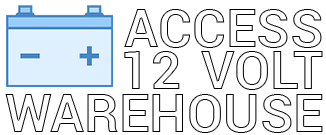What is an MPPT solar controller?
A Maximum Power Point Tracking (MPPT) solar charge controller is a DC-to-DC converter that optimizes the match between the solar array (PV panels), and the battery bank or utility grid. It receives voltage from the solar panels and converts it to charge your battery at a more appropriate level. MPPT charge controllers get their name because they monitor the solar panel and determine the maximum power point voltage for the current conditions. This function is called maximum power point tracking, or MPPT for short.
What is a PWM solar controller?
A Pulse Width Modulation (PWM) solar charge controller is a type of solar controller that uses pulse-width modulation technology. PWM controllers reduce the flow of energy gradually to properly regulate energy. The solar charge controller (also known as the regulator) functions similarly to a regular battery charger in that it manages the current flowing from the solar panel to the battery bank to prevent overcharging.
Which is better, PWM or MPPT?
The main difference between PWM and MPPT solar controllers is that the PWM controller pulls the solar panel voltage down to just above battery voltage, away from the Maximum Power Point (MPP) of the panel. An MPPT charge controller matches its internal resistance to the solar panel Characteristic Resistance, drawing current at the Maximum Power Point.
In general, MPPT charge controllers can harness optimal performance from any solar array under a wide range of conditions, while PWM controllers are limited in their scope of application.
